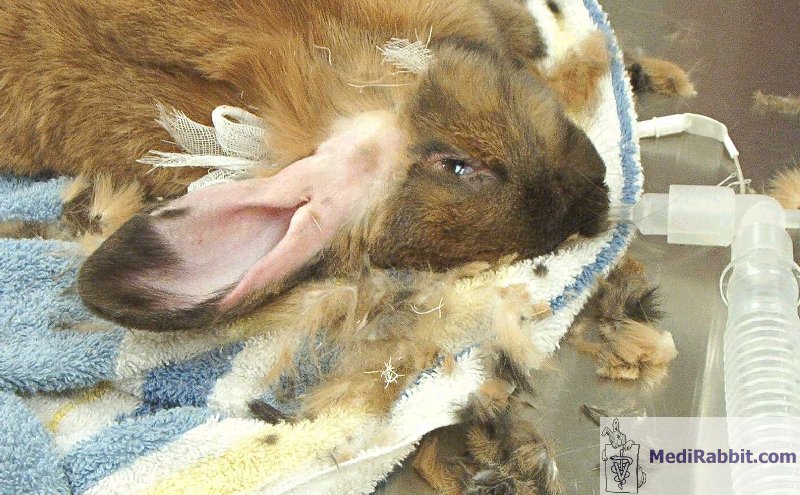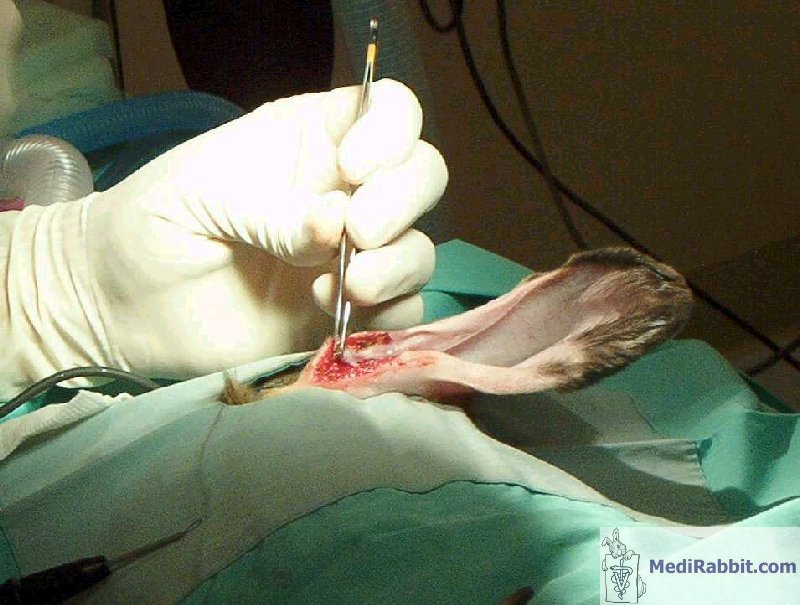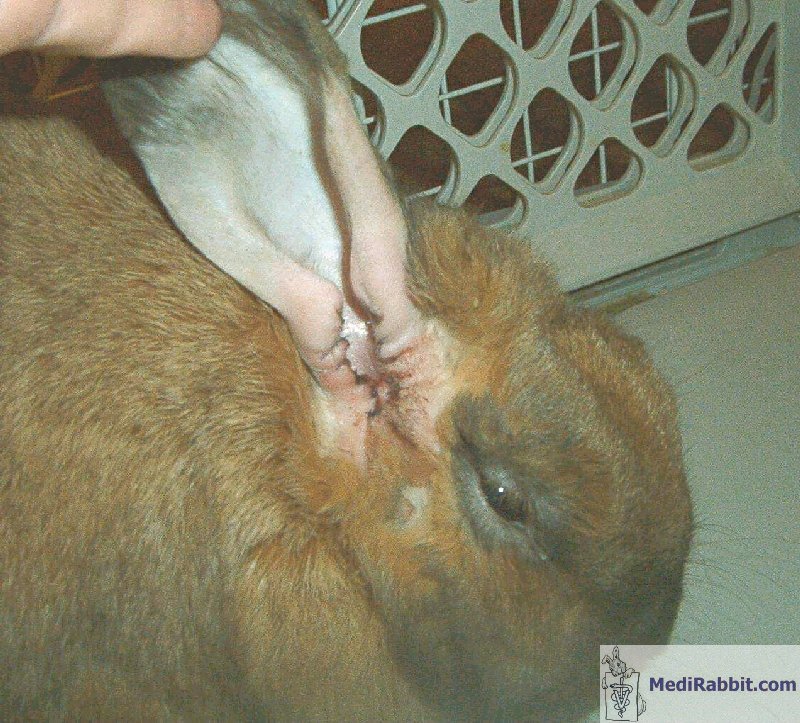Lateral ear
resection in (lop) rabbits
Esther van Praag, Ph.D.
|
MediRabbit.com is
funded solely by the generosity of donors. Every
donation, no matter what the size, is appreciated and will aid in the continuing
research of medical care and health of rabbits. Thank you |
Warning: this file
contains pictures that may be distressing for people.
|
Rabbits can suffer from chronic
ear infection. Lop-rabbits are particularly predisposed to chronic ear
infection, due to the conformation of the ear canal and the lop ear that
prevents a good aeration. This leads to
chronic ear infection.
Various initial treatments are often
attempted, but their failure leads to the accumulation of pus, and the
occlusion of the in the ear canal. This prevents topical ear medication to
come in contact with the infectious organisms and kill them. The result is
that the infection cannot be properly treated and becomes worse, or: ·
it is treated, but relapse occurs after a few
months; ·
it has led to structural changes in the ear, like
ulceration or the growth of a tumor or a polyp. Lateral ear resection surgery can be attempted when
no structural modifications are observed in the horizontal ear canal. The aim
of this procedure is to shorten the length of the ear canal, in order to
facilitate aeration, drainage, and to enable the medication to reach the
infectious site. The modification of temperature and the decrease of internal
humidity can, furthermore, lead to a decrease of the bacterial infection. Surgical procedure and post-surgical care
The surgical procedure will reconstruct the entry of
the ear canal by removing a small portion of skin, cartilage, and of the ear
canal. A new “opening” is reconstructed in order to expose the ear canal. Inner ear infection is
accompanied by ataxia (circling, rolling stumbling), leaning to one side and
head-tilt, continuous horizontal or rotary nystagmus (involuntary rhythmic
eye movement).
Kim Chilson Lateral ear resection surgery, performed by B.
Langhofer, DVM, in his clinic in 2004
Kim Chilson Aspect of the ear, 16 hours post-surgery The
administration of antibiotics and analgesics is necessary after the surgical
procedure. The later will reduce pain, known to slow down the activity of the
digestive tract, delay food intake and recovery in rabbits. The
site of surgery may get bloody crusts and be covered with ear discharge. It
is recommended not to take them away, till the sutures are removed. It usually takes another few months before the ear
infection is completely cleared. Acknowledgement
All
my gratitude to Kim Chilson (USA) and to Dr B. Langhofer
(The Scottsdale Veterinary Clinic
Scottsdale, Scottsdale, AZ, USA)
for sharing this innovative surgical procedure of ear resection in rabbits, and
for the permission to use the pictures. . |
||||
e-mail: info@medirabbit.com








